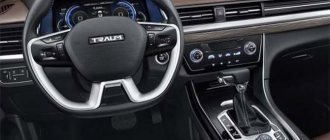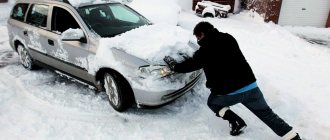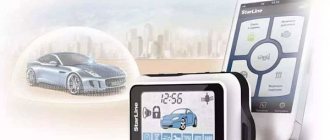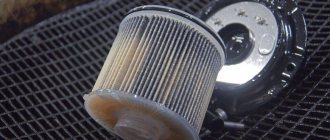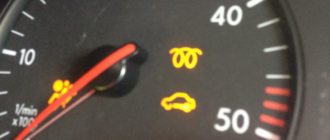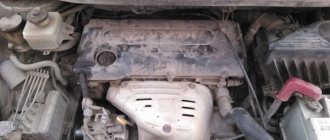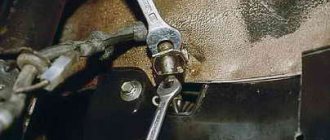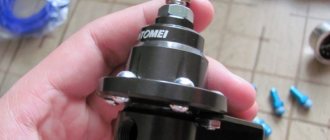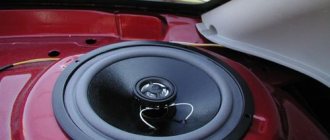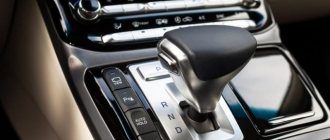Those who recently studied at a driving school to get a license were faced with the practice of driving around the city. This is where most instructors teach you to pull away using only one clutch.
However, this is not always sufficient. Currently, there are many videos on the World Wide Web, during which it becomes clear how to start a manual car for beginners from scratch.
To get a more accessible video or instructions on the Internet, it is recommended to search for how to start a car manually for dummies. It is then that a huge list will open, where each clip will explain in detail how to start the car to a mechanic in the form of step-by-step instructions.
How to properly start a manual car in cold weather
It is recommended to start moving as soon as possible during the cold season. This will help to operate the vehicle more correctly and will not create any interference for other road users. In order to start moving, you need to use not only the clutch, but also slightly apply the gas.
When starting off using only one clutch, the nature of the road surface is important. In cases where there are no unevenness or additional obstacles on the roads, when it is a complete and smooth road surface, it is recommended to move away only with the clutch. But this is in cases where the road is very smooth, which is rare in modern reality.
Spark spark discord
The condition of the candles may not be a cause for concern in the summer, but with the onset of cold weather they can cause a problem. Plugs with carbon deposits or too much or too little gap on the contacts will not produce a spark sufficient to ignite the fuel.
How to start a manual car step by step for beginners
Before starting the vehicle, it is recommended to put the car in neutral, most often this is the middle gear shift position in the gearbox. This is done for the purpose of disconnecting the car from the transmission.
An experienced driver will immediately note that the same result can be achieved by depressing the clutch pedal. In this case, you need to be prepared and keep your hand on the handbrake or your foot on the brake, since if you start moving down a hill or bump, the car can be pulled back, which can lead to a traffic accident out of the blue.
After that, the key is inserted into the ignition switch and turned clockwise to start. When the ignition is turned on, the gauges on the dashboard will light up, indicating that it is working properly. Then the key must be turned even more until the starter starts.
How to start an engine without a battery from a tow?
Only vehicles equipped with a manual transmission can be towed. Starting a car with an automatic transmission like this is fraught with its breakdown!
To normally start a car from a tow, it is enough to follow the algorithm that will be discussed below, but if there is no battery, you will need any power source that produces 10-15 volts. To start a car without a battery (without a battery at all or with a completely non-working one) from a tow, you need to connect the power source with the plus to the excitation of the generator (a separate thin wire to it), and the minus to ground.
If there is a battery, but it does not work at all due to internal short circuits, it must be disconnected, and the “+” terminal must be securely isolated from the body to avoid a short circuit.
After this you need:
- Turn off all possible consumers (lights, music, stove).
- Turn on the ignition.
- Start the car from a tow or pusher.
- Remove the battery used for excitation, without turning off the engine, and drive.
How to properly drive without a battery so as not to damage the car, read in the final part of this article.
On a carburetor with a mechanical fuel pump, such an emergency engine start is usually carried out without problems, since the engine is simple and has only an ignition system from electronics. But the answer to the question whether it is possible to start a car without an injector battery directly depends on whether the generator will provide the required current to the fuel pump and ECU at the start.
How to start correctly from a tugboat?
Launching a car from a tow
- Connect the car to the tow using a cable.
- Turn on the ignition.
- Engage 2nd or 3rd gear and continue to hold the clutch.
- Give the command to move off to the tug driver (it is better to agree on the commands in advance, since the headlights and signal are not available without sufficient power supply).
- After gaining sufficient speed (optimal for the selected gear), release the clutch and wait for the engine to start confidently.
- Give the command to stop to the driver of the towing car, unhook the cable after stopping.
The lower the gear is engaged, the higher the speed and torque are transmitted from the wheels. It is better to start a cold engine in second gear, and a warm engine can easily start in third.
It is not recommended to start the car from a tow or pusher in first gear. Firstly, the engine resistance in this mode is higher and it will be harder to push. Secondly, there is a risk of the timing belt breaking or slipping due to a sudden change in loads.
How to start without lighting a manual
Starting a car without a manual battery, if there is nothing to light it from, is possible in the following ways:
- from the pusher;
- from a tug;
- from a crooked starter (on some older cars).
If there is no battery at all or it does not show any signs of life, starting the car without a battery is only possible using the method outlined above (at least some weak power source to excite the generator).
You can quickly start the battery without lighting it manually when starting from a pusher on gasoline cars with a carburetor. The injector will have to be pushed longer (which is difficult), since it needs time for the pump to pump gasoline into the ramp. Starting a diesel engine with a mechanical injection pump using this method from a pushrod is difficult due to the high compression in the cylinders, which significantly complicates cranking the engine.
If a diesel engine is equipped with electronic injection on a Common Rail ramp, starting it without a battery from a pusher is almost impossible. In such cases, only a towing vehicle can handle it.
There are three options for starting the car if the battery is dead without lighting the injector:
- start with a pushrod, as in the case of a carburetor;
- spin the motor with a cable wound around the wheel;
- start the engine from a tug, attached to another car.
Starting the engine using a cable on the wheel
To start a car with a dead battery from a cable, you will need at least 3 meters (a flat towing cable is better and the longer the better), a jack (to lift the car from the side on which it will be wound up) and a safety net for the second wheel.
The startup process is as follows:
Starting the engine using a cable
- We jack up one drive wheel, slightly turning its front part outward (so that the cable does not cling to the fender or bumper).
- We block the driven wheels with a handbrake and additional stops (shoes, stones, bars).
- We wind the cable tightly around the wheel against its rotation, so that when you pull the cable, it rotates forward.
- Turn on the ignition and 3rd gear.
- We pull the cable so that the wheel begins to rotate forward and spin the engine.
There is no need to hook the cable to the wheel; it should easily fly off after unwinding. You should also not wrap it around your hand or loop it around your wrist to avoid injury!
How to start without lighting a diesel engine with manual transmission
Starting the car using a jump starter
Starting a diesel internal combustion engine with a manual transmission from a pusher is difficult, since the compression in its cylinders is approximately twice as high as a gasoline engine (25-30 atmospheres, versus 10-15). This is additional resistance. Therefore, in order to push or twist a wheel alone, you must have heroic strength and endurance.
To start a diesel engine without the help of strong assistants who can gain good speed and overcome the resistance of the pistons, you will have to cling to a tow. But here the process can also be complicated by the fact that a cold engine will not start without warming up the glow plugs. So, without a donor battery or starting device, starting a diesel engine is very problematic.
How to start without lighting a car
When the question arose of how to start a car without a battery, the answer will most likely be - no way ! Because from a pusher it’s generally unrealistic. Since even if the automatic transmission supports the forced start scenario, a person will not be able to accelerate the car to the desired speed. But basically, be it a classic torque converter, a variator or a modern DSG, they will not only not start, but may also break.
The exception is VAZ cars with a robotic gearbox 2182. They start in almost the same way as on a manual one, but the battery must be at least a little alive (so that the engine ECU turns on and the pump pumps up the gasoline pressure in the rail).
Automatic transmissions that can be started at least from a tug are not very common, and such a procedure does not make sense; it’s easier to borrow a battery or take the trouble to find someone to “light it with.” Or you will have to buy a battery. Paying 5 thousand rubles for a new battery is cheaper than what you would have to pay for the overhaul of a broken machine.
Starting a car with a continuously variable variator risks damaging the belt and gearbox pulleys, and the DSG gearbox can damage the servos.
How to start a car correctly as a mechanic for beginners
It is necessary to use a working car with working sensors, while the environment, climate and temperature are also important.
When the car moves smoothly, this shows the fact that the entire algorithm went in the right direction. You don’t need to immediately release or pull the clutch, since this will also affect the nature of the vehicle’s maneuvers; you need to smoothly release the clutch, pick up speed and switch it to move forward or backward.
This moment can be felt, for example, you press the clutch - the car starts moving, let go - after a few meters it gradually begins to stall and stops, so several times, squeezing the clutch, do not allow it to stall and stop.
Fuel must be of high quality
The problem of gasoline quality is familiar to every driver. It is better not to use random and dubious gas stations, especially those with dumping prices. If the octane level of the fuel is insufficient in the summer, the car will most likely start without problems. But at significant low temperatures the engine will begin to act up.
In winter, it is better not to allow less than half the tank of fuel. An incomplete tank is an excellent environment for condensation to form. If water gets into the fuel line, it will turn into ice and block the flow of fuel to the carburetor.
How to start a car manually
We take a sample car, put it in neutral and on the handbrake. Depress the clutch and turn the key in the ignition. At the same time, keep one foot near the brake and one hand near the handbrake. This is done in order to prevent possible movement of the funds backwards.
We apply gas, thereby giving the engine the required number of revolutions, and release the clutch, gradually, with increasing speed, smoothly release the clutch and switch the speed one higher. Using gas, it is best to maintain the optimal number of revolutions.
It is not recommended to overuse the clutch, as this creates additional stress, which can lead to faster vehicle failure.
It is also best to keep the speed in the recommended mode, since increased speed will not lead to anything good. This leads to rapid wear and decommissioning of the engine. For each sample, the optimal amount of turnover is different.
Prevent “Hypothermia”
If you put the car in a warm garage in winter, winter starting problems are reduced to zero. Not everyone has this opportunity; the average car owner leaves his iron friend overnight in the courtyard of his house, not far from his entrance.
- In this situation, you can use auto-warming. Almost all modern alarm systems have this option.
- By setting the mode for a period of time (for example, starting the engine every 3 hours) or for a minimum cooling temperature (autostart when the temperature drops to the selected minimum), you can sleep and not worry about how not to be late for work tomorrow.
- The disadvantages of such heating are increased fuel consumption and additional wear on engine components. It is believed that each engine start is equal to a vehicle mileage of 200 kilometers.
If severe frost is expected at night, and a trip is planned in the morning, it is better to warm up the car while driving before going to bed. Idle speed will not allow for full warm-up. In order for the engine to reach operating 90 degrees, you need to drive 1.5-2 kilometers.
A piece of cardboard inserted in front of the radiator and a special thermal blanket under the hood will allow the engine to warm up faster and retain heat longer after a trip.
If the cold has overcome all barriers and reached the heart of the car, you need to look for the “weak link” that creates a problem with starting.
Electrical preheating
Some cars are equipped with an electric heating system.
It comes in two types.
- The heating element is installed in the cylinder block.
- The heating element is included in the small circuit of the cooling system through hoses, but is installed as a separate unit.
If you have access to an outlet, this is one of the most gentle and 100% successful launch options.
Special aerosols
In car dealerships it is now easy to purchase a spray in cans designed to solve the problem of starting the engine with the onset of cold weather. This is an effective tool and quite easy to use.
Injections into the carburetor or intake manifold increase the octane number significantly; fuel enriched in this way greatly increases the chances of a successful start. The disadvantage of this method is detonation, which appears at the beginning of engine operation.
Do not turn the starter for more than 15 seconds. It's better to wait 30-40 seconds and start it again.
Oil viscosity
Oil intended for summer is thicker than winter oil. If you leave such oil for the winter, there is a high probability that problems with your car will arise in cold weather. At very low temperatures, summer oil thickens significantly and becomes like grease.
In order for the crankshaft to turn in such an environment, the starter will require additional effort. That's why there is a special winter oil for winter. Remaining liquid, it retains its properties and promotes good sliding of parts.
In the European Union, America and Japan, SAE oil is classified by type.
- Summer oil
- Winter oil
- All-season oil
In winter, oils of 0W, 5W, 10W, 15W, 20W, 25W are used. The numbers here show the specific temperature at which the lubricant is used. The smaller they are, the lower the temperature outside the vehicle being used can be.
Calcination of candles
Often, inexperienced drivers flood the spark plugs when starting in winter. The reason is that the gas is pressed at the moment of starting. Excess fuel splashes the spark plugs. If you unscrew the spark plug, you can clearly see it.
Wet candles are well calcined on the fire of a gas stove or with a gas canister. If necessary, they are cleaned and hot installed in place.
